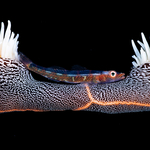
By Mallory Rachel Haas in Plymouth, England, United Kingdom
With your support 1000TyresProject aims to reduce the pollutants in Plymouth Sound and surrounding rivers by the removal of discarded tyres and dumped rubbish.
The SHIPS Project is a local history project based in Plymouth U.K., specialising in maritime and underwater heritage. The SHIPS Project has launched the 1000 Tyres Project because we have located lots of tyres and other junk while searching for shipwrecks in Plymouth Sound.
How did we find the tyres?
We found the tyres while doing sonar surveys in Plymouth Sound with Sonardyne’s Solstice sonar and working with the Plymouth University’s hydrographic department. Sonar creates an image of the seabed we can’t normally see, the image has more detail, is a wider area than can be seen by an ROV or divers, and sonar can be used in very deep areas to gain a better picture. Because of many years of working with Sonardyne and the hydro department at Plymouth University, we have developed an expertise in identifying man-made objects on the seafloor. We have processed the sonar collected from within Plymouth Sound and identified several hundred tyres, and have recorded their coordinates. The processing and the identification is the difficult part, but fortunately, we already know how to do this! You can read more about The SHIPS Project on this website link.
How will we do this?
We will do this by locating the tyres, recovering them to the surface, collecting them together before having the tyres recycled. The aim of the 1000 Tyres Project is to not only remove pollutants from our marine environments but for the project to provide education and awareness on the issues of discarded tyres, and the dumping of rubbish in high traffic areas, which are not pristine environments. This is a great opportunity to show many non-divers what the underwater world looks like, and that it needs our attention.

What will we do
- Locate – We already have a good working data set of known tyres improperly disposed of on the seabed in Plymouth Sound. We were able to see this with previous geophysical surveys done with Plymouth University Hydrography Department and donated time and equipment by local private businesses, like Sonodyne.
- Remove – Removing these discarded tyres and dumped rubbish will stop the further dispersion of pollutants into Plymouth’s marine environment. Removing the tyres will benefit the long term biodiversity in Plymouth Sound but also be an activity divers and non-divers alike can engage with for cleaning up Plymouth Sound.
- Collect – An identified place and appropriate receptacle will be provided with support from local authorities. The container will be easy to access via a drop-off point from any boat for the tyres and marine rubbish to be disposed of.
- Recycle – We will be finding responsible avenues for recycling the tyres removed from Plymouth Sound. We have several concepts for turning the tyres into fuel on a commercial basis but we are looking for further options for ways to recycle unwanted tyres and marine plastic rubbish.
Where did the tyres come from?
There have been many tyres lost in Plymouth Sound over the years. Some of the lost tyres were fenders that fell off ships while others were deliberately dumped in the sea and rivers.
The sonar image below is a picture of the seabed by the Breakwater Fort showing lots of lost tyres that used to be fenders around the Breakwater jetty.


What are we going to achieve?
- We will be helping to clean up Plymouth Sound!
- This project will bring to light the issues of discarded tyres and dumping
- The project will be an education source to reduce the amount of new dumping
- We will understand how the removal of tyres may better our marine ecosystem
Why we need your support
- We need to work out exactly how to do this properly and the first step is a feasibility study.
- We need to train our team. The team members, divers and non-divers will need to be trained in safety and best practice for in water lifting and recovery on to any boat or platform used in the removal.
- We will be able to educate divers, non-divers, and school children on the issue of discarded tyres, and dumped rubbish and how they can make an impact.
- We will be able to develop the website showing where all these tyres are, on a Tyre map and identify which have been, or need to be removed.
- We will be able to develop an app that allows divers and non-divers to see where each tyre is at with coordinates and check off if they have completed recovery of that tyre.
- We have made a start at mapping Plymouth Sound, but it’s not complete. With a full survey, we will likely identify more tyres and dumped rubbish leaching microplastic and pollutants into our marine environment which should be recovered.
Why Pledge?
- Enabling people to clean up their marine environment
- Making citizen scientists
- Removing a source of pollution from our seas
- Contributing to scientific research on the health of our oceans
Thank you
As a thank you for your support, we are very happy to offer a range of rewards.
Learn more at: https://www.crowdfunder.co.uk/1000-tyres-project
Read More Environmental News, Cleaning Up the Waterways, Man-Made Objects On The Seafloor, Plymouth Sound, Plymouth University, seafloor, Sonardyne’s Solstice Sonar, Tyres The Scuba News

